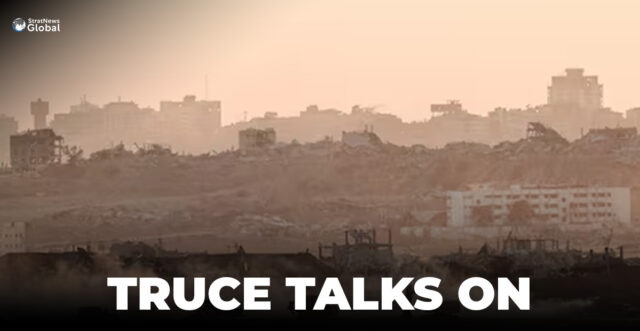Since July 6, Hamas and Israel’s negotiators have been engaged in the latest round of ceasefire talks in Doha, focusing on a U.S.-backed proposal for a 60-day truce that includes a phased release of hostages, Israeli troop withdrawals from parts of Gaza, and negotiations aimed at ending the conflict.
U.S., Qatari and Egyptian mediators have been working to secure an agreement. However, initial optimism that a deal might be at hand has waned in recent days.
Here are the details of the ceasefire proposals, as outlined by an official, who spoke on condition of anonymity, and a look at some of the political calculations in play:
Hostages And Palestinian Prisoners
Ten hostages held in Gaza will be returned along with the bodies of 18 others, spread out over 60 days. The swaps will take place without ceremonies or parades. In exchange, Israel will release the detained Palestinians. The exact number is not clear.
Israel says that of 50 hostages held by Hamas and its allies, about 20 are believed to be alive.
Aid To Palestinians
In accordance with a January 19 agreement, aid will immediately enter Gaza in sufficient amounts with the involvement of the United Nations and the International Committee of the Red Cross.
Israeli Withdrawals
On Day One, after an initial eight hostages are released, the Israeli army will withdraw from parts of northern Gaza as per maps that will be agreed upon.
On Day Seven, after receiving five bodies, Israel will withdraw from parts of the south as per the maps.
A technical team will work on drawing boundaries for withdrawals during rapid negotiations that will take place after agreement on the framework of the proposal.
Negotiations On A Permanent Truce
On Day One of the agreement, negotiations will start on a permanent ceasefire. If an agreement is reached, all remaining Palestinian prisoners detained from Gaza since October 7, 2023, will be released.
Guarantees
The proposal guarantees U.S. President Donald Trump’s commitment to the agreement. The mediators will guarantee that serious negotiations take place during the pause. If more time is needed, they can extend that period.
Political Calculations In Israel
Two far-right members of the Israeli cabinet — Finance Minister Bezalel Smotrich and National Security Minister Itamar Ben-Gvir — have criticised the ceasefire push, demanding instead the total destruction of Hamas.
It is not clear if they would resign if a deal is signed. Looking to keep them on side, Netanyahu is pushing for the Israeli military to hold much more of Gaza than it did when the last ceasefire came into effect in January, allowing the army to control land between Khan Younis and Rafah in the south. The government has said it plans to build a “humanitarian city” for some 600,000 people in this area, saying it will be a safe space for Gazans. Opponents have likened it to a concentration camp.
Critics say Netanyahu is looking to stretch out the negotiations until July 27, when the Knesset (parliament) breaks for the summer recess. It is much harder to collapse a government when the Knesset is closed.
Political Calculations For Hamas
Hamas is fundamentally opposed to leaving so much land under direct Israeli control or the creation of a closed-off “humanitarian city”, which would further diminish its already battered grip on the coastal enclave. As such, it is demanding that Israeli forces withdraw to the lines established ahead of the January ceasefire.
It has also pushed for stronger guarantees that any pause in hostilities would lead to a permanent end to the war, worried that the Israelis have no intention of extending the truce.
(With inputs from Reuters)





